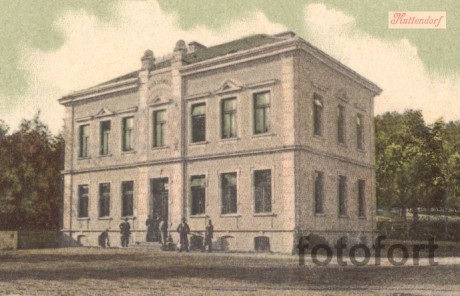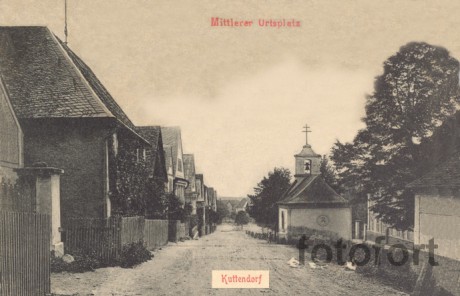Chotiněves
Chotiněves ( German cowl village) is a village in the Czech Republic. It is located eleven kilometers east of Litoměřice and belongs to Okres Litoměřice.
Geography
The village is located at the northeastern foot of the 371 m high Hořidla ( Horsch hedgehog ). By Chotiněves leads the state road 240 between Liběšice and Roudnice.
Neighboring towns are Dolni Chobolice in the north, Liběšice in the northeast, Lada in the east, in the southeast Břehoryje, Jištěrpy in the south, Třebutičky the southwest, Horni Řepčice in the west and Soběnice and Pec pod in the Northwest.
History
Chotiniewes was first documented in 1323 as the property of Divis of Sovenice. The district Jištěrpy was already mentioned in 1057 as a villa Desecripi.
Chotiněves made since the 14th century one of the Veste Liběšice minor possession. The owners were Albert of Friedland, the Škopek of Dubé, Berka of Dubé, Dubanský of Duban and Georg Wilhelm Sezimov of Sezimovo Ústí whose property was confiscated after the Battle of White Mountain. 1623 was the Jesuit College of St. Clement in Prague of the seized property Sezimovs the rule Liběšice, the village Jištěrpy and part of the rule Úštěk with the villages Tetčiněves and Rochov.
1680 broke into Chotiněves from the plague and only three families survived. In the wake of the dissolution of the Jesuit order whose property was in 1773 handed over to the religious fund. 1838 bought by the Duke of Roudnice, Prince Ferdinand Lobkowicz on Enzowan the reigns Liběšice and Úštěk. Ten years later cowl village was after the replacement of patrimonial regimes for independent community. Traditionally survived the inhabitants of the village of hops and fruit-growing.
1871 sold the Lobkowicz Palace and the Liebeschitz all goods associated goods to the textile manufacturer Joseph Schroll. In the first half of the 20th century, the Horsch Hedgehog cottage was built on the Horsch hedgehog, which no longer exists today. 1930 lived in cowl village 351 people, of whom 345 German. After the Second World War, the German inhabitants were expelled and settled Wolhynientschechen.
Community structure
The municipality consists of the villages Chotiněves Chotiněves ( cowl village) and Jištěrpy ( Giessdorf ), at the same time also form Katastralbezirke.
Attractions
- Evangelical Church, built in 1951
- Chapel of St. Prokop, built in 1806
- Bell tower from 1720
- Chapel of St. Kilian in Jištěrpy
- Log houses
- Statue of Mary on the road between Chotiněves and Jištěrpy






.jpg)
.jpg)


